Shakir Hassan Al Said (Iraq, 1925-2004)One Thousand and One Nights (Alf Laylah wa-Laylah) ink on paper in nine parts variously signed and dated, executed in 1955 29 x 22cm eachFootnotesProvenance: Property from the Artist's Estate "Give me in marriage to this King: either I shall die and be a ransom for the daughters of Muslims, or live and be the cause of their deliverance." - Scherezade Folk Art: Al Said's Earliest Inspiration and Sources By Dr Ahmed Naji Unlike most artists in the Arab world, Al Said is distinguished for writing about his art and making art about his writing – a practice he maintained throughout his life. Some of his first articles date back to the early 1950s which coincided with his co-founding of the Baghdad Modern Art Group and we see a particular focus on the theme of folk art as one of the main sources of turath – tradition. While these articles have survived to the present day, several of the drawings he discussed therein were not published or seen for various reasons, including the group of drawings presented here. These ink drawings, which are a remarkable addition to Al Said's renowned body of work, date back to 1955 and 1956, although the undated drawings of Shimmir and Ali and Abbas are possibly from 1953 and 1954, if we are to refer to Al Said's article titled "The Predicament of Shimmir in the House of Vengeance" published in Al-Adab journal, 1954. Therefore, the drawings can be discussed briefly in two groups. Re-inspired Scenes from the tales of One Thousand and One Nights Amongst the widely distributed publications in Iraq and the Arab world are the tales of One Thousand and One Nights, which is a collection of stories compiled by various writers from the 9th century to the 20th century, also known in English as The Arabian Nights, with a popular version published in 1909 by Charles Scribner's Sons, New York. The Arabic version that Al Said had, which was referenced in several of his articles, was published in Egypt and based on an earlier version from 1932, also printed in Cairo in the state-owned printing house established by Mohammed Ali Pasha in the 1800s. The version Al Said had contained illustrations depicting different scenes from the tales including nudes, albeit in simplistic drawings. It is noteworthy that the same version Al Said had was outlawed in Egypt in 1985 for breaching literary decency regulations, however, a digital scan of the same version is available today online under a Creative Commons license. Al Said re-imagined the illustrations in his own style to explore folk art, specifically the conduit it provides to Al Said to express his own personal feelings through a well-known work of art widely accepted by the general public. These One Thousand and One Nights drawings by Al Said are amongst the best known to date in their quality of line and composition, without any preparatory sketches, pencil marks or additional colouring material. When compared with the 19th-century original illustrations, Al Said's drawings offer a more visceral and sharp interpretation of the nuances and thrill of the tales. No. 1/2: Shehrazad and King Sharyar opening scene No. 3: The tale of night 784 of Al-Hassan Al-Basri and his reunion with his seven sisters after long travels and adventures. No. 4: The tale of night 37 of the tailor who was tied to the mill after falling in love and losing his fortune. No. 5: The tale of night 266 of Al-As'aad and Queen Murjana. Al-As'aad survived by reaching land after being thrown in the sea by an evil merchant. No 6: Scene not illustrated from the story of the King with the Wiseman Royan No 7: The tale of Jodur and night 612 of Al-Maghribi. No. 8: Text of the tales stylised by Al Said to emphasise the shape of the Arabic letter as motifs present in folk art and design, such as crescents and triangles featured in tapestry and crafts. No. 9: General scene of women possibly inspired from the story of the Island of Waq-Waq Dr Ahmed Naji is an independent rese
Shakir Hassan Al Said (Iraq, 1925-2004)One Thousand and One Nights (Alf Laylah wa-Laylah) ink on paper in nine parts variously signed and dated, executed in 1955 29 x 22cm eachFootnotesProvenance: Property from the Artist's Estate "Give me in marriage to this King: either I shall die and be a ransom for the daughters of Muslims, or live and be the cause of their deliverance." - Scherezade Folk Art: Al Said's Earliest Inspiration and Sources By Dr Ahmed Naji Unlike most artists in the Arab world, Al Said is distinguished for writing about his art and making art about his writing – a practice he maintained throughout his life. Some of his first articles date back to the early 1950s which coincided with his co-founding of the Baghdad Modern Art Group and we see a particular focus on the theme of folk art as one of the main sources of turath – tradition. While these articles have survived to the present day, several of the drawings he discussed therein were not published or seen for various reasons, including the group of drawings presented here. These ink drawings, which are a remarkable addition to Al Said's renowned body of work, date back to 1955 and 1956, although the undated drawings of Shimmir and Ali and Abbas are possibly from 1953 and 1954, if we are to refer to Al Said's article titled "The Predicament of Shimmir in the House of Vengeance" published in Al-Adab journal, 1954. Therefore, the drawings can be discussed briefly in two groups. Re-inspired Scenes from the tales of One Thousand and One Nights Amongst the widely distributed publications in Iraq and the Arab world are the tales of One Thousand and One Nights, which is a collection of stories compiled by various writers from the 9th century to the 20th century, also known in English as The Arabian Nights, with a popular version published in 1909 by Charles Scribner's Sons, New York. The Arabic version that Al Said had, which was referenced in several of his articles, was published in Egypt and based on an earlier version from 1932, also printed in Cairo in the state-owned printing house established by Mohammed Ali Pasha in the 1800s. The version Al Said had contained illustrations depicting different scenes from the tales including nudes, albeit in simplistic drawings. It is noteworthy that the same version Al Said had was outlawed in Egypt in 1985 for breaching literary decency regulations, however, a digital scan of the same version is available today online under a Creative Commons license. Al Said re-imagined the illustrations in his own style to explore folk art, specifically the conduit it provides to Al Said to express his own personal feelings through a well-known work of art widely accepted by the general public. These One Thousand and One Nights drawings by Al Said are amongst the best known to date in their quality of line and composition, without any preparatory sketches, pencil marks or additional colouring material. When compared with the 19th-century original illustrations, Al Said's drawings offer a more visceral and sharp interpretation of the nuances and thrill of the tales. No. 1/2: Shehrazad and King Sharyar opening scene No. 3: The tale of night 784 of Al-Hassan Al-Basri and his reunion with his seven sisters after long travels and adventures. No. 4: The tale of night 37 of the tailor who was tied to the mill after falling in love and losing his fortune. No. 5: The tale of night 266 of Al-As'aad and Queen Murjana. Al-As'aad survived by reaching land after being thrown in the sea by an evil merchant. No 6: Scene not illustrated from the story of the King with the Wiseman Royan No 7: The tale of Jodur and night 612 of Al-Maghribi. No. 8: Text of the tales stylised by Al Said to emphasise the shape of the Arabic letter as motifs present in folk art and design, such as crescents and triangles featured in tapestry and crafts. No. 9: General scene of women possibly inspired from the story of the Island of Waq-Waq Dr Ahmed Naji is an independent rese



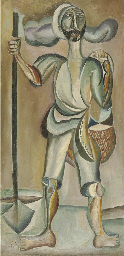
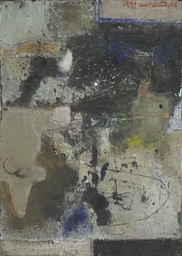
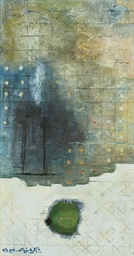
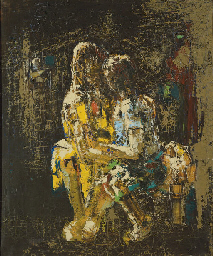



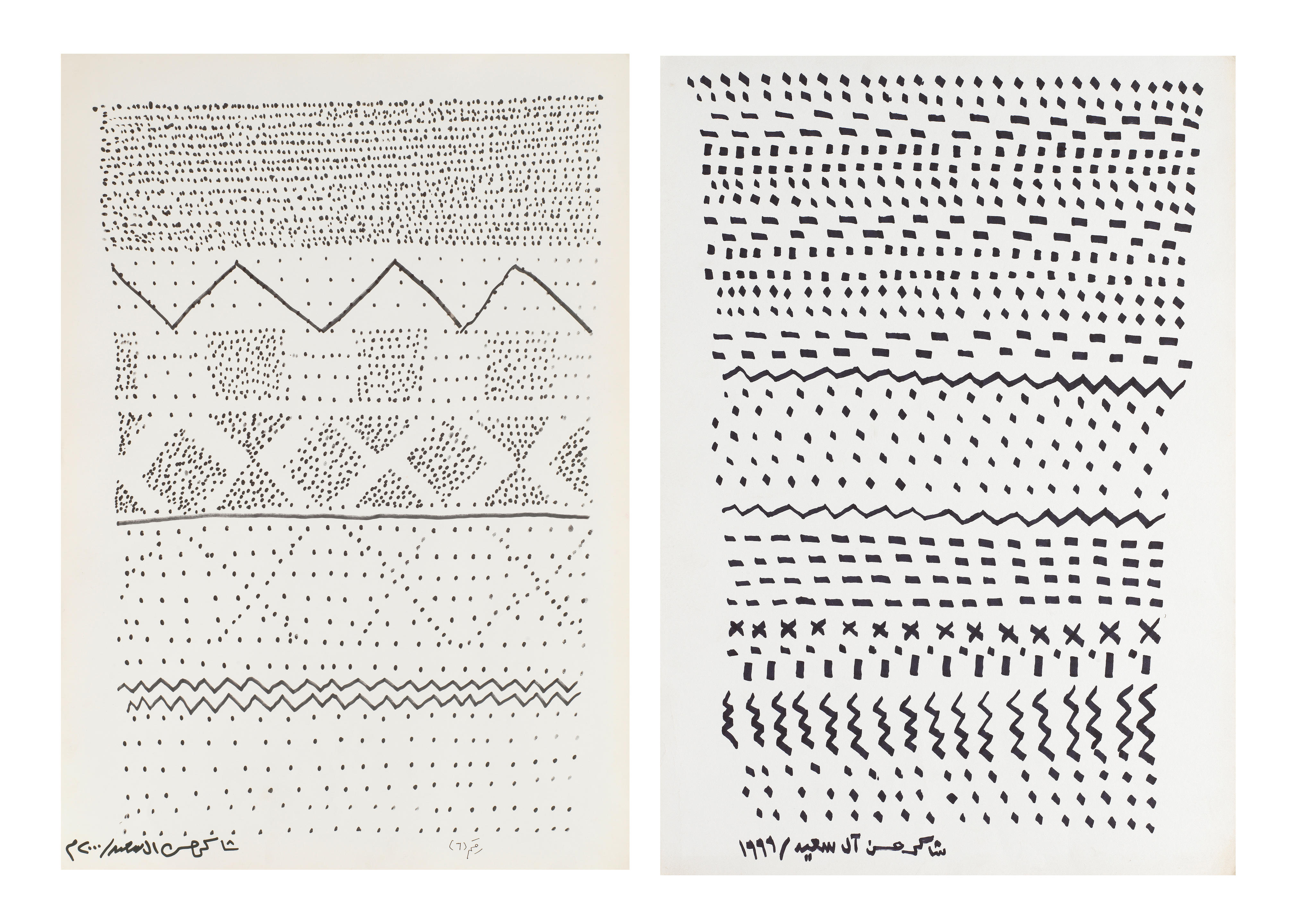



Try LotSearch and its premium features for 7 days - without any costs!
Be notified automatically about new items in upcoming auctions.
Create an alert